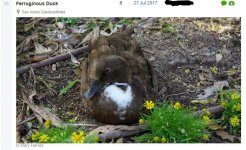Larry Sweetland
Formerly 'Larry Wheatland'
I've just discovered ebird, and am currently dipping into it as I go to help find sites to check out on an ongoing Peru trip. Am I missing something or is ebird totally nuts? I've just been to the central plaza in urban Cusco, and am struggling to imagine the vast majority of the 77 species ebird tells me are possible at the location, particularly the rain forest and aquatic habitat obligate species.
Check out pretty much any ebird hotspot in Peru and you'll find this. Am I missing something, or is the idea of ebird to pinpoint and name a spot on a map, and rattle of a list of birds that you might have seen within 100km? I've so far ended up in a couple of fine eucalyptus plantations in the hope of seeing the reported specialities apparently living within! Even using the bar charts to thin out the nutty stuff isn't fail safe.
I can only imagine what a dangerous I'd tool ebird can potentially be too, with birder X being happy that they saw bird Z at site A, because birder Y initially misidentified one there and put it on ebird, so that's what birders P,Q and R also figured they must have seen.
Are we in for a crazy future, or am I missing something?
Check out pretty much any ebird hotspot in Peru and you'll find this. Am I missing something, or is the idea of ebird to pinpoint and name a spot on a map, and rattle of a list of birds that you might have seen within 100km? I've so far ended up in a couple of fine eucalyptus plantations in the hope of seeing the reported specialities apparently living within! Even using the bar charts to thin out the nutty stuff isn't fail safe.
I can only imagine what a dangerous I'd tool ebird can potentially be too, with birder X being happy that they saw bird Z at site A, because birder Y initially misidentified one there and put it on ebird, so that's what birders P,Q and R also figured they must have seen.
Are we in for a crazy future, or am I missing something?








